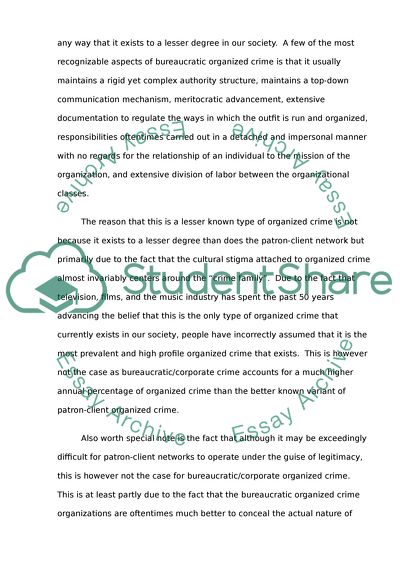Cite this document
(“Organized Crime: Understanding Key Differences Between Essay”, n.d.)
Organized Crime: Understanding Key Differences Between Essay. Retrieved from https://studentshare.org/law/1458313-organized-crime-understanding-key-differences-between-bureaucraticcorporate-and-patron-client-organized-crime-networks
Organized Crime: Understanding Key Differences Between Essay. Retrieved from https://studentshare.org/law/1458313-organized-crime-understanding-key-differences-between-bureaucraticcorporate-and-patron-client-organized-crime-networks
(Organized Crime: Understanding Key Differences Between Essay)
Organized Crime: Understanding Key Differences Between Essay. https://studentshare.org/law/1458313-organized-crime-understanding-key-differences-between-bureaucraticcorporate-and-patron-client-organized-crime-networks.
Organized Crime: Understanding Key Differences Between Essay. https://studentshare.org/law/1458313-organized-crime-understanding-key-differences-between-bureaucraticcorporate-and-patron-client-organized-crime-networks.
“Organized Crime: Understanding Key Differences Between Essay”, n.d. https://studentshare.org/law/1458313-organized-crime-understanding-key-differences-between-bureaucraticcorporate-and-patron-client-organized-crime-networks.


